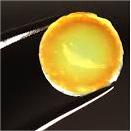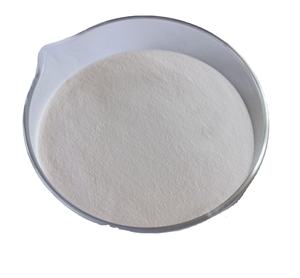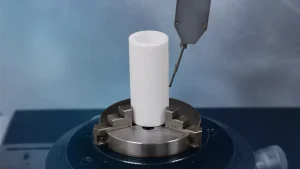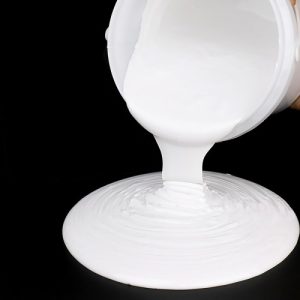Professional industry ceramic supplier, silicon nitride, silicon carbide, aluminum nitride and any other kinds of ceramics.
1. Introduction
Just 24 hours ago, NASA and private aerospace firm Relativity Space announced a joint initiative to develop next-generation rocket nozzles using titanium aluminide (TiAl) alloys—materials that can only be processed in crucibles capable of withstanding temperatures above 1,600°C without contaminating the melt. Enter the silicon carbide crucible: a silent but indispensable hero in advanced material synthesis.

While many associate silicon carbide with abrasives or even dinnerware (yes, there are silicon carbide ceramic dinner plates!), its most demanding applications lie in industrial and scientific high-temperature processing. In this article, we’ll zoom in on one niche but mission-critical use: aerospace alloy production.
2. The Demanding World of Aerospace Alloy Casting
2.1. Why Standard Crucibles Fail
Traditional alumina (Al2O3) or zirconia (ZrO2) crucibles often react with reactive molten metals like titanium or aluminum-lithium alloys. These reactions introduce impurities that compromise mechanical strength—a non-starter for jet engines or spacecraft components.
Zirconia crucibles, though refractory, can suffer from phase instability above 1,500°C. Alumina tubes or alumina ceramic crucibles may leach oxygen into the melt, causing embrittlement. That’s where silicon carbide shines.
2.2. Silicon Carbide Crucible: The High-Temperature Workhorse

A silicon carbide crucible offers exceptional thermal shock resistance, high thermal conductivity, and remarkable chemical inertness—even when in contact with molten titanium or nickel superalloys. Its covalent bonding structure makes it far less reactive than oxide-based ceramics.
Unlike boron carbide vs silicon carbide debates in armor applications, in crucible use, silicon carbide’s balance of cost, machinability, and performance makes it the go-to choice for many foundries and research labs.
3. Beyond the Crucible: Supporting Advanced Ceramic Ecosystems
3.1. Complementary Components in High-Temp Furnaces
Silicon carbide doesn’t work alone. It’s often paired with other advanced ceramics in furnace setups:
- Silicon carbide ceramic tubes for thermocouple protection
- Silicon carbide burner nozzles for uniform heating
- Silicon carbide brick linings for insulation
- RBSiC silicon carbide tile blocks for structural support

These components form a cohesive high-temperature ecosystem that maintains purity and stability during alloy processing.
3.2. Silicon Nitride: A Strategic Alternative?
In some ultra-high-purity applications, engineers turn to silicon nitride crucible factories for Si3N4-based containers. Silicon nitride ceramic offers even lower reactivity with certain melts and excellent creep resistance.
However, silicon nitride is more expensive and harder to fabricate in large volumes. Custom silicon nitride heat shields or silicon nitride rings are common in semiconductor or nuclear applications—but for most aerospace casting, silicon carbide remains the pragmatic champion.
4. Real-World Impact: From Lab to Launchpad
Companies like Beere Precision Products and specialized advanced ceramics manufacturers now supply tailored silicon carbide crucibles for additive manufacturing feedstock production. These crucibles help create the spherical metal powders used in 3D-printed rocket parts.
Moreover, the same material science that enables a silicon carbide crucible also powers silicon carbide ceramic baking dishes and silicon carbide ceramic serving bowls—but those operate at a fraction of the thermal stress seen in aerospace foundries.
5. Future Outlook and Material Innovation
As demand grows for lighter, stronger aerospace components, so does the need for cleaner, more reliable melting processes. Innovations in reaction-bonded silicon carbide (RBSiC) and composite crucibles—sometimes blending silicon carbide with mullite or zirconia—are pushing performance boundaries.
Meanwhile, the high purity silicon nitride powder market expands in parallel, signaling a broader trend: advanced ceramics are no longer just lab curiosities—they’re mission-enabling infrastructure.
6. Conclusion
The silicon carbide crucible may look like a simple container, but in the world of aerospace metallurgy, it’s a gatekeeper of material integrity. Its ability to endure extreme heat without contaminating reactive alloys makes it irreplaceable—far beyond the realm of silicon carbide ceramic dinnerware or kitchenware. As space exploration accelerates, so too will reliance on this unsung ceramic hero.
Our Website founded on October 17, 2012, is a high-tech enterprise committed to the research and development, production, processing, sales and technical services of ceramic relative materials such as Why. Our products includes but not limited to Boron Carbide Ceramic Products, Boron Nitride Ceramic Products, Silicon Carbide Ceramic Products, Silicon Nitride Ceramic Products, Zirconium Dioxide Ceramic Products, etc. If you are interested, please feel free to contact us.






